Ever felt like your steak could double as a chew toy? Don’t worry — you’re not alone.
Transforming a tough, sinewy cut of beef into a tender, juicy masterpiece isn’t just the stuff of steakhouse legends. With a little know-how and a few clever kitchen tricks, you can coax even the most stubborn cut into melt-in-your-mouth submission right at home.
Whether you’re dealing with budget-friendly chuck roast or that mysterious hunk labeled “stew meat,” these expert tips will help you unlock rich flavors, soft textures, and that perfect bite.
From mastering marinades to slicing like a pro, here’s how to make every cut of beef taste like a million bucks — no magic wand (or overpriced filet) required.
1. Marinate with Acids
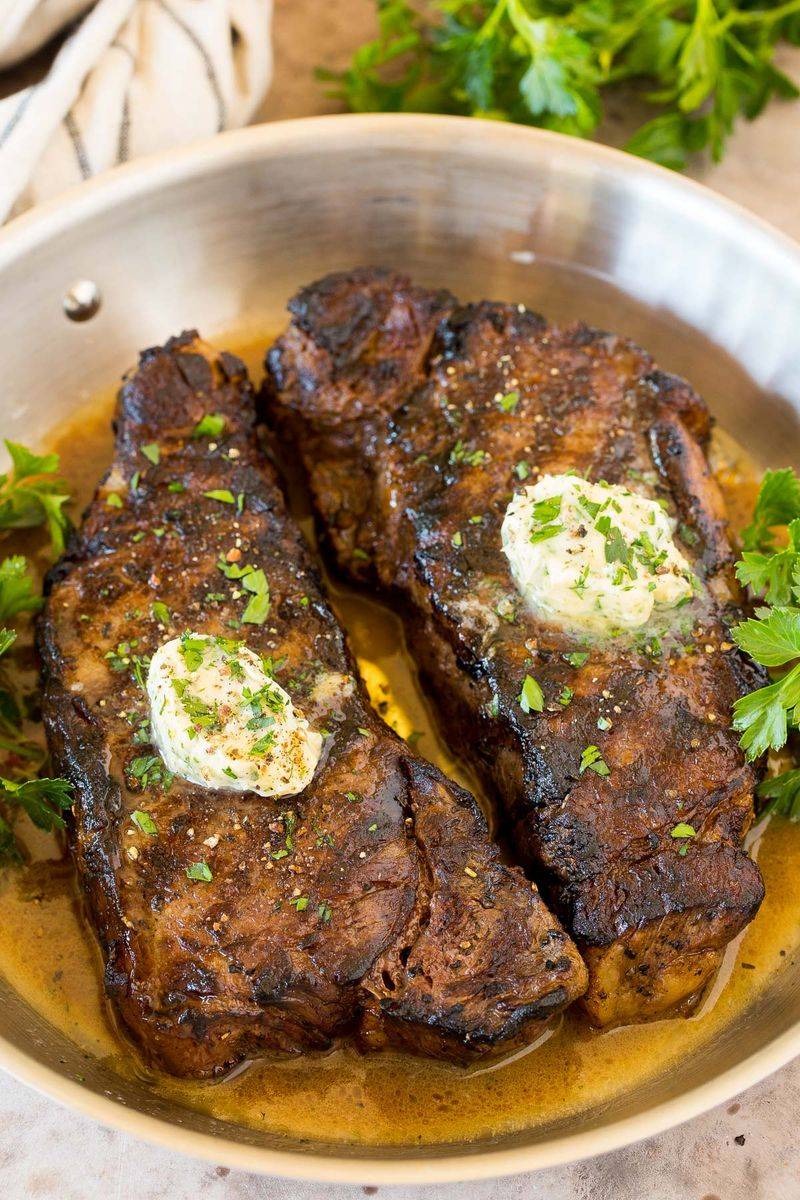
Acids are the unsung heroes in the kitchen. They work wonders by breaking down tough muscle fibers, turning chewy beef into something much more palatable. Marinating your beef in acidic liquids like lemon juice, lime juice, or vinegar for a few hours can make a significant difference.
Imagine a zingy marinade enveloping your steak, working its magic over time. The acids not only tenderize but also infuse the meat with vibrant flavors.
However, be cautious not to over-marinate, as it can alter the texture negatively. The key is to find that sweet spot where tenderness meets taste. A few hours are generally sufficient, leaving you with beef that’s both soft and flavorful.
2. Use a Meat Tenderizer Tool
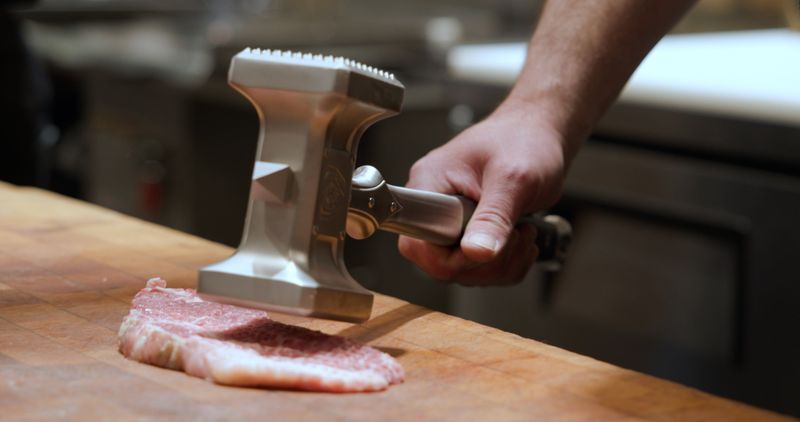
Sometimes, you just need to get a little hands-on with your beef. Introducing the meat tenderizer tool, a wonderful invention for breaking down those stubborn fibers. This tool can be a hammer-style tenderizer, with small spikes that pierce the surface.
By physically pounding the beef, you help to loosen up those tough strands. It’s a great stress reliever, too! Before you know it, your beef will be primed and ready for the heat.
Tenderizing not only makes the meat softer but also allows for better absorption of marinades and seasonings. It’s an essential step if you’re working with a particularly tough cut.
3. Cook Low and Slow

Patience is a virtue, especially when cooking beef. Slow cooking is your ally in transforming tough cuts into a succulent delight. By slowly simmering beef at low temperatures, the collagen breaks down gradually.
Stews, braises, and slow-roasted meals are perfect methods for this approach. Imagine the aroma filling your kitchen as the beef tenderizes over hours.
This method not only softens the meat but also enhances its natural flavors. It’s like giving your beef a warm, culinary hug, resulting in a dish that’s bound to impress.
4. Braise with Broth
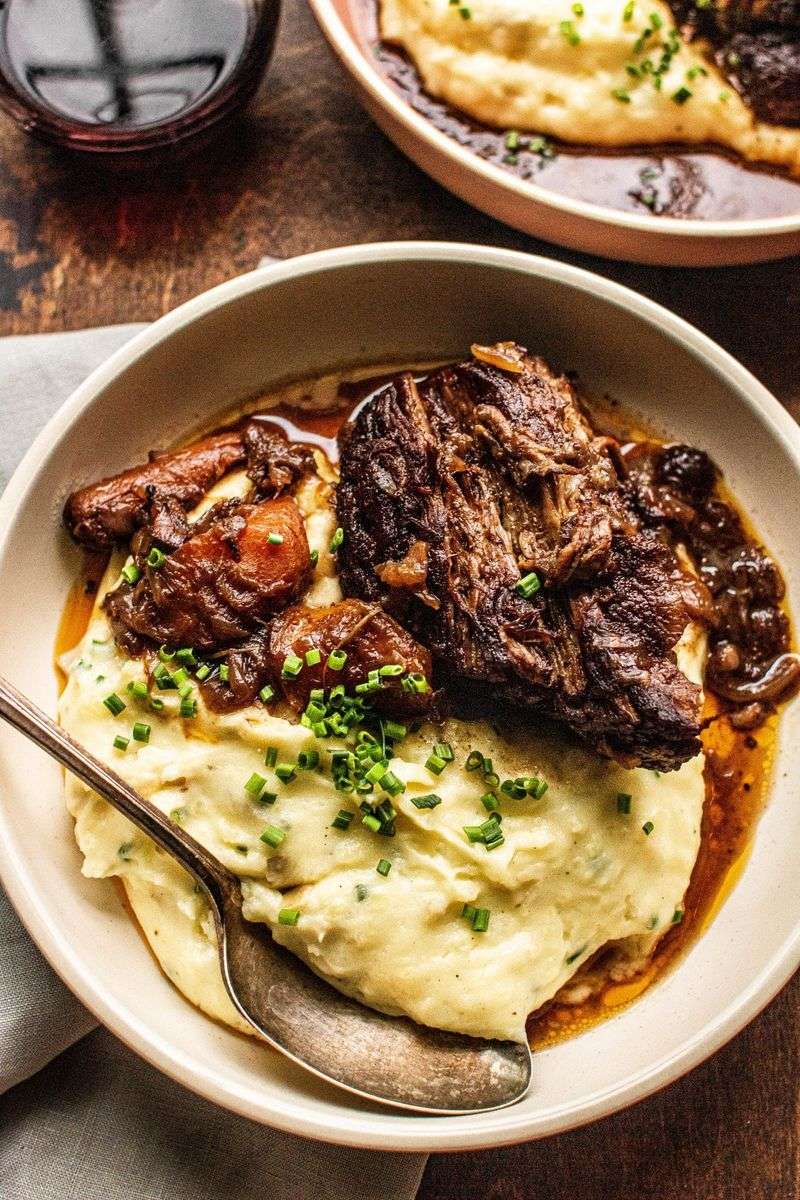
Braising is an age-old technique that transforms tough meat into a tender feast. Combining both wet and dry heat, braising involves searing the beef first and then slowly cooking it in a flavorful broth.
Consider using beef stock, wine, or even beer as your liquid base. As the meat cooks, it’s enveloped in moisture, allowing flavors to penetrate deeply.
This method is perfect for those colder days when you crave something comforting and hearty. The end result? A delightful dish that’s rich in flavor and melt-in-your-mouth tender.
5. Cut Against the Grain
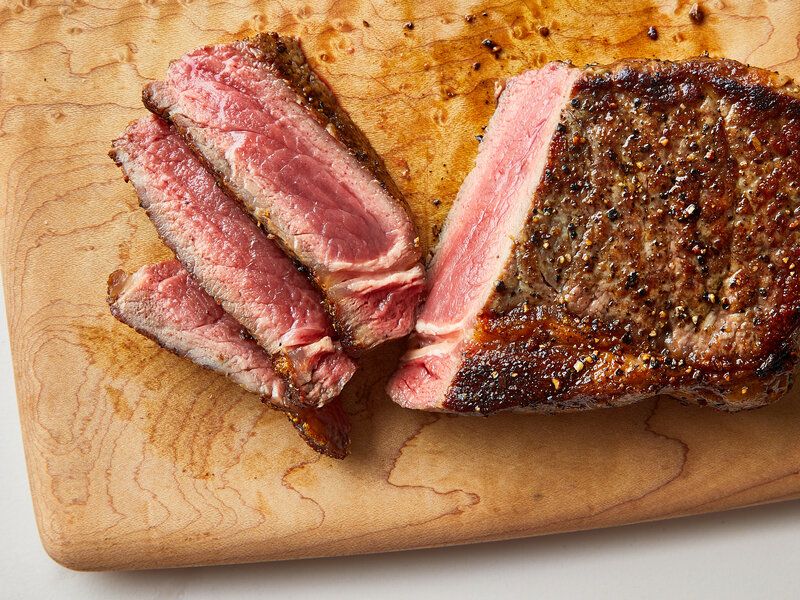
The way you slice your beef can significantly affect its tenderness. To optimize tenderness, always cut against the grain. This means slicing perpendicular to the direction of the muscle fibers.
By doing so, you shorten the fibers, making each bite easier to chew. It’s a simple yet effective method that can make a world of difference in the texture of your beef dish.
Imagine serving a beautifully sliced roast, each piece tender and juicy. It’s a technique every cook should master to ensure their beef is always at its best.
6. Dry-Aging
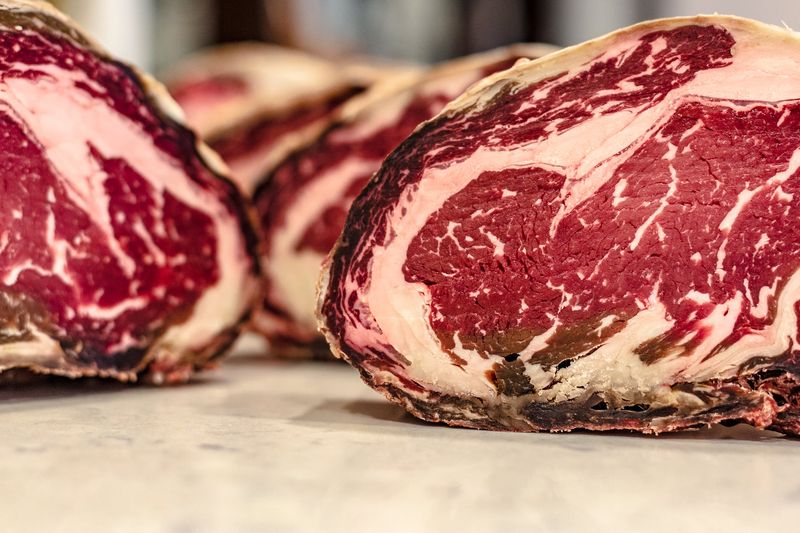
Dry-aging is the art of patience and precision. This process involves hanging beef cuts in a controlled, chilled environment for several weeks. The magic happens as natural enzymes break down the muscle tissue.
This not only tenderizes the meat but also concentrates its flavors, resulting in a rich, beefy taste.
Though it requires time, the reward is a cut of beef that’s unparalleled in flavor and texture. If you’re serious about your beef, exploring dry-aging techniques could be a game-changer.
7. Use Enzymatic Tenderizers
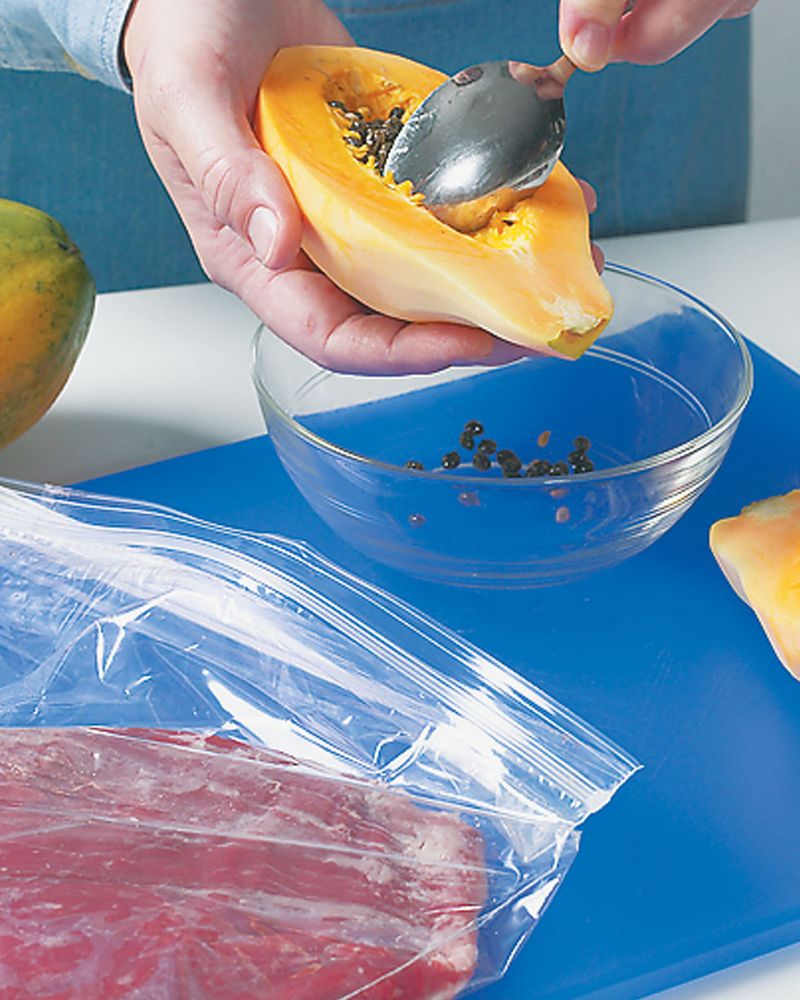
Nature provides us with some incredible tenderizing tools in the form of enzymes. Papaya, pineapple, and commercial enzyme powders can be used to tenderize beef effectively. These enzymes break down the proteins in the meat.
Just imagine the gentle touch of nature at work, turning tough cuts into tender pleasures. However, moderation is key, as leaving them on too long can lead to mushy textures.
When used correctly, these natural tenderizers can make even the most challenging cuts of beef delectable. It’s a natural, flavorful way to achieve mouthwatering results.
Leave a comment